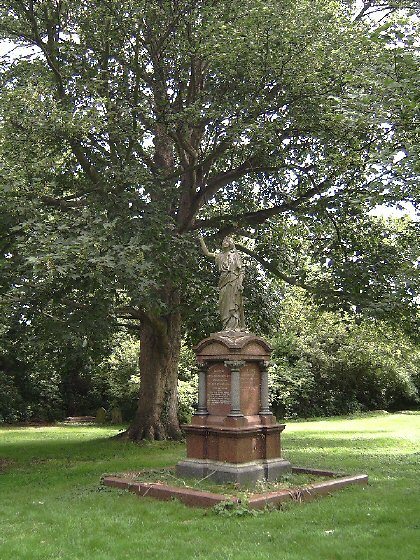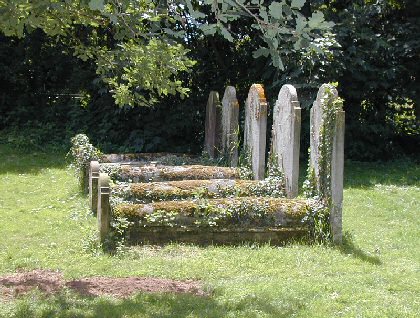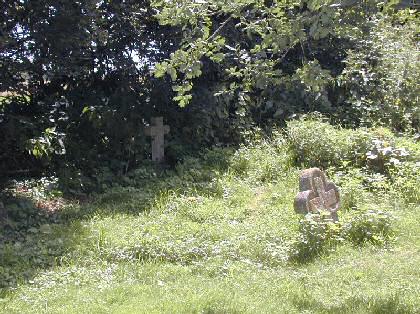Shopland Churchyard Conservation Area Appraisal and Management Plan
(1) 5.0 Character Analysis
5.1 The special character of Shopland Churchyard Conservation Area lies both in its value as green space and in the historical and local interest associated with its use which resides in the surviving monuments and landscape.
5.2 The gravestones are dispersed and lie mainly to the south and on the eastern edge of the churchyard, either in isolation or in small groups.
5.3 The only large memorial is an imposing granite monument to Lewis Utton and his family, former residents of Shopland Hall, which stands close to the entrance to the churchyard.
5.4 The remaining gravestones are modest in scale and simple but varied in design, with a generally informal arrangement. In addition to the Utton monument, other gravestones mark the resting place of important local individuals, including the local historian Philip Benton, whose grave is marked by a simple flat memorial alongside those of other family members in the north-east corner, and Frederick Thackeray, cousin of the author William Makepeace Thackeray. Other notable individuals whose remains were interred at Shopland but whose memorials have been removed are the aforementioned Thomas de Stapel, and Charles Tyrell, incumbent, who died in 1695 and whose memorial carried an ancient curse against its removal or desecration. Two adjacent head and foot stones on the south side of the site of the church, dated 1718 and 1727, are Grade II listed. The oldest memorial is on the south side close to the site of the south porch of the church, and is a large flat stone now heavily eroded and illegible, but believed to be that of William Haker, dated 1639. To the south there is an attractive and orderly arrangement of nine Victorian graves with upright headstones, body tombs and footstones. The most recent burials are of the 1930s6. The graves are free of flowers, plant holders and other ornamentation.
5.5 A significant proportion of the gravestones, perhaps a third of them, are overgrown by bushes and weeds, including ivy and self-seeded sycamore, and some have been completely engulfed by scrub encroaching from the boundary hedge. A small number have fallen, or have parts missing, others are badly eroded and have lost their inscriptions.
5.6 Shallow rectangular earthworks and residual masonry now barely visible beneath grass and vegetation, mark the original position of the church, adding interest and variety to the landscape. Like all parish churches, its site is of great historical and archaeological importance.
Figure 17. Earthworks marking the position of the church

5.7 Shopland Churchyard has significant interest as a green space, with its mature boundary hedge and trees providing wildlife habitat, and attractive greensward. The existing boundary trees and vegetation appear mostly to have grown up by natural regeneration rather than as part of a formal planting scheme, but the First Edition Ordnance Survey map clearly shows that trees were a significant feature of the churchyard in the past. The boundary today is formed mainly of self-propagating species, particularly sycamore. There is one large yew tree in the northern boundary. In some areas, notably at the southern end of the west boundary, the encroaching scrub is altering the shape of the churchyard, and swallowing gravestones around the periphery. Two mature sycamores dominate the northern half of the churchyard, their broad trunks and spreading boughs framing appealing vistas and creating patterns of light and shade on the ground. Elsewhere to the south immature saplings are growing near the church earthworks.
Figures 18. Mature Sycamore trees make a significant contribution to the character of the churchyard.
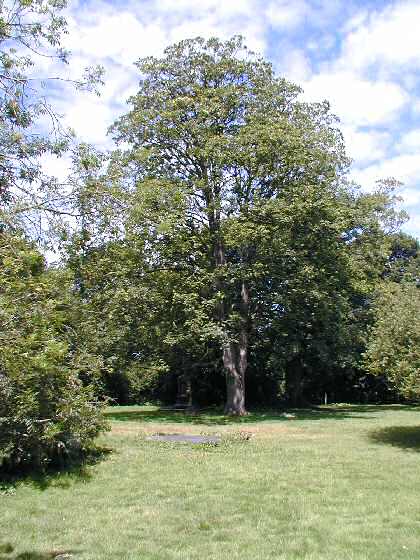
Figures 19. Mature Sycamore trees make a significant contribution to the character of the churchyard.
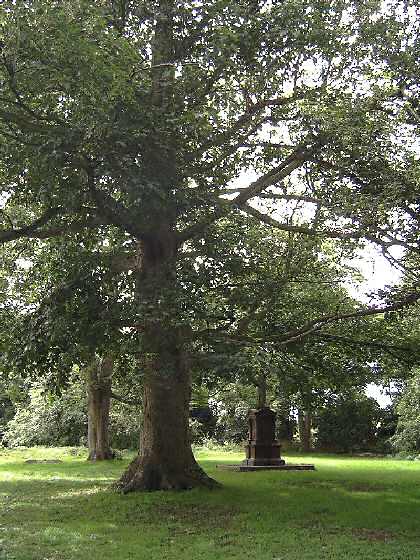
5.8 Despite the encroaching scrub and an air of redundancy, the churchyard does not appear neglected. The grass is kept short and tidy, the area is free of rubbish and there are no signs of vandalism.
5.9 The absence of any signage or other modern utilitarian intrusions give a sense of timelessness and abandonment. The general impression is of peaceful isolation, and of a safe, calm and contemplative space.
6 The monumental inscriptions of the churchyard were surveyed by the Essex Society for Family History in 1985. The survey can be consulted in the Essex Record Office.

